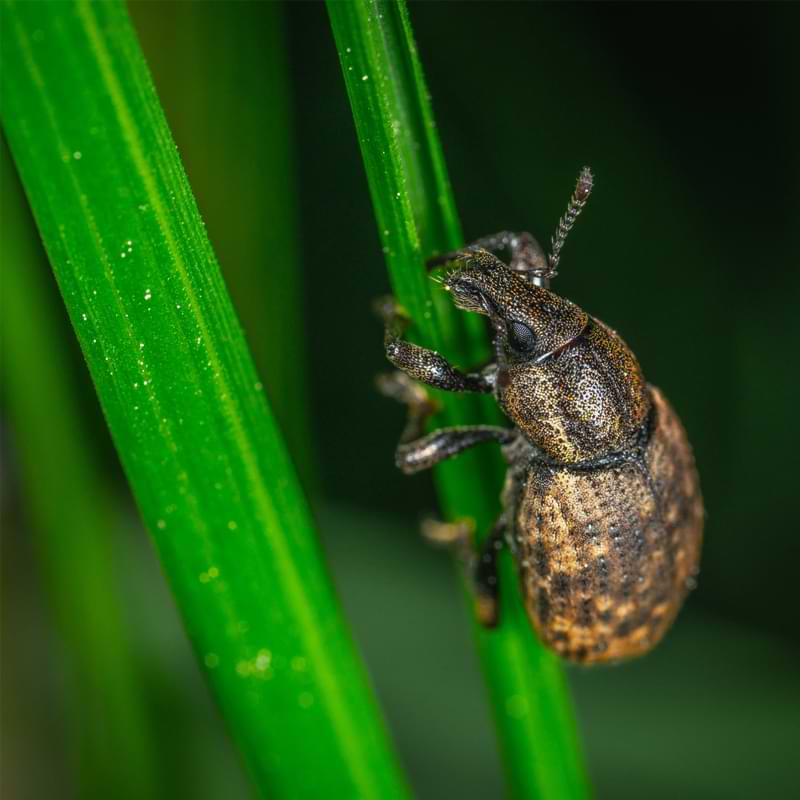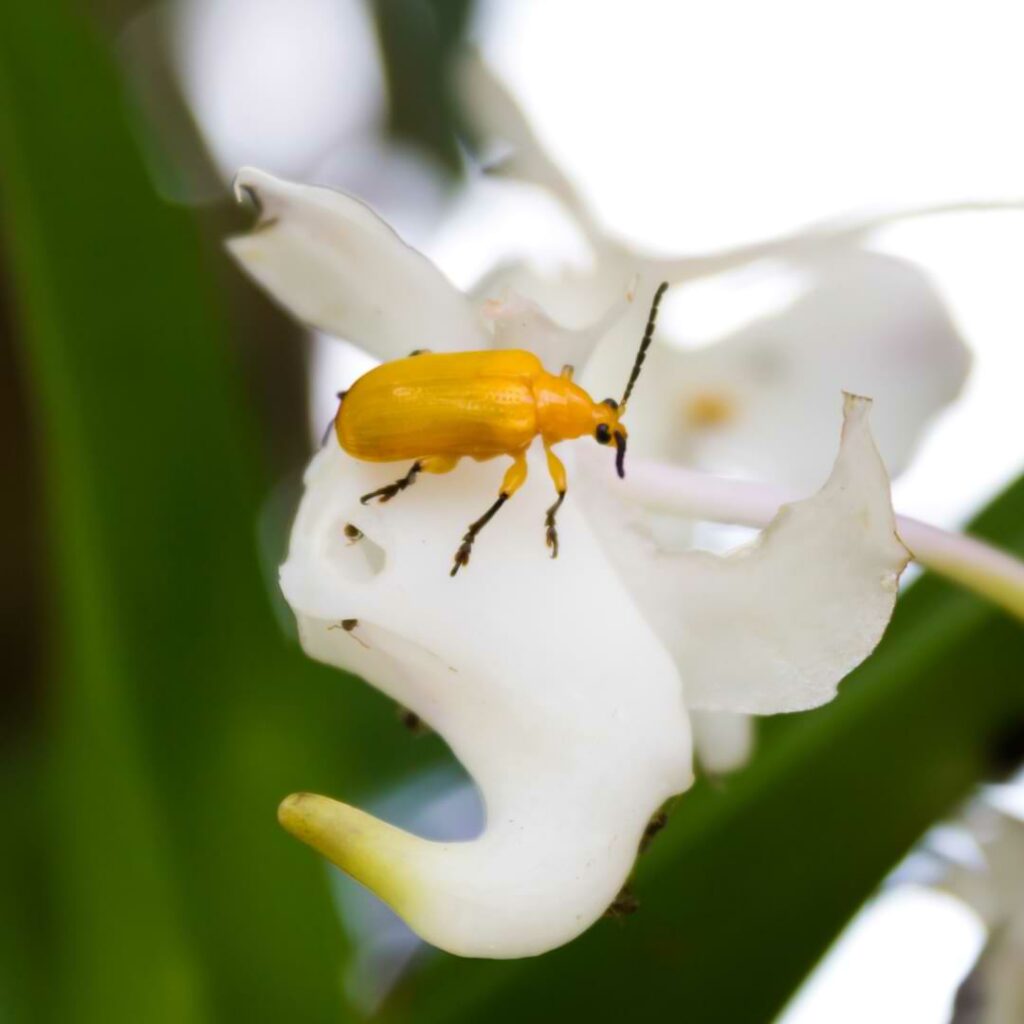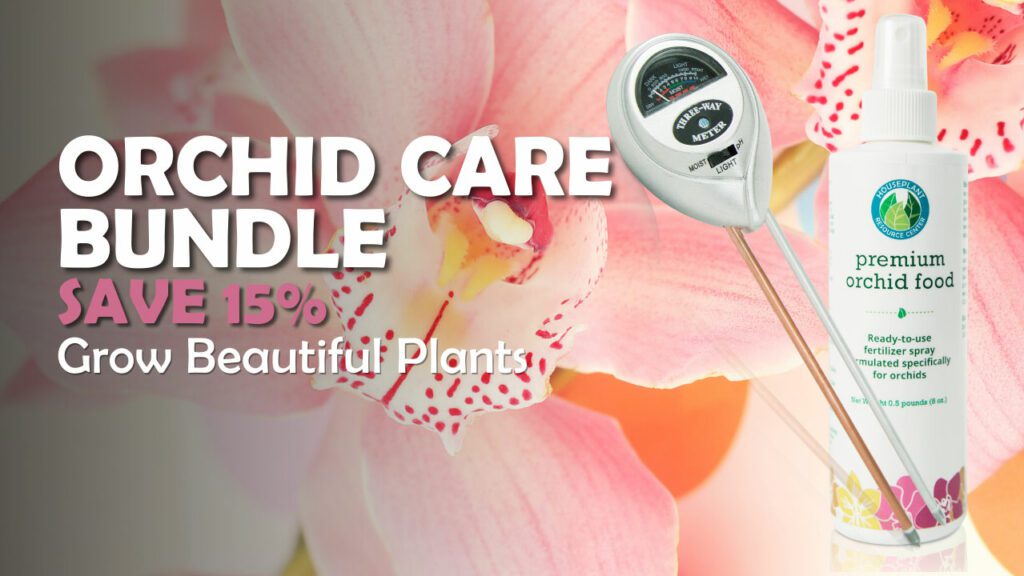Orchids are stunning and delicate flowers that can light up any room with their beauty. However, even the most experienced orchid growers can face pest problems that threaten to damage or kill these precious plants. Ants, aphids, caterpillars, mealy bugs, mites, scale insects, slugs, snails, thrips and whitefly are just some of the pests you may encounter when growing orchids.
Identifying Common Orchid Pests
Identifying common orchid pests early on is key to preventing their spread and damage. This identification guide will help you determine what pests are harming your Orchid, and how you can get rid of them.
Ants
Ants are one of the most common pests that can affect your orchids. While these tiny insects may seem harmless, they can cause significant damage to your plants if left unchecked.
Ants are attracted to the sweet honeydew produced by other orchid pests such as aphids and mealybugs. They will often farm these insects for their honeydew, protecting them from predators in exchange for a steady food source. If you notice ants crawling around your orchids, it is essential to take action promptly. These pesky insects can quickly spread disease and attract other harmful pests.
Aphids
Aphids are tiny, pear-shaped insects that feast on the sap of orchid plants. They come in various colors such as green, black, brown, and yellow. Aphids multiply quickly and can cause significant damage to your orchids if left untreated.
One of the most obvious signs of aphids is their sticky honeydew residue which as mentioned above, attracts ants and other pests. Another sign is a curling or distorted leaf where aphids feed. These pests can also transmit diseases from one plant to another.
Caterpillars
Caterpillars are one of the most common pests that can attack your orchids, although not as common when your Orchid is kept inside. The larvae feed on the leaves and flowers, leaving behind holes and unsightly marks. There are several types of caterpillars that can infest your orchids.
The most common type is the armyworm caterpillar, which feeds voraciously on plant tissue. They can quickly cause significant damage if not controlled early on. Another type is the cutworm caterpillar, which attacks young seedlings by cutting them at the base.
Mealy Bugs
Mealy bugs are common pests that can attack orchids. These insects have a white, powdery appearance and feed on the sap from the plant’s tissues. Mealy bugs can cause damage to your plants by sucking out their vital nutrients.
If you notice an infestation of mealy bugs, it’s important to take action quickly before they become too difficult to control. One way to do this is by removing any visible insects with a soft brush or cotton swab dipped in rubbing alcohol.
Another method for controlling mealy bug populations is through the use of insecticidal soap or neem oil spray. These products work by suffocating the insects and preventing them from feeding on your orchid.
In addition, introducing natural predators such as ladybugs or lacewings into your garden can help keep mealy bug populations under control. It’s essential to regularly inspect your orchids for signs of pests and act quickly when necessary to prevent further damage.
Mites
Mites are tiny arachnids that can be harmful to Orchids. They are difficult to spot with the naked eye, but their presence can cause severe damage to the plant. Mites feed on the sap of orchid leaves, which causes the leaves to wilt and turn yellow.
One way to identify mite infestation is by checking for webbing on the undersides of leaves. This webbing serves as a protective barrier for mites and their eggs. The presence of this webbing indicates a significant infestation that requires immediate attention.
Scale
Scale is another common orchid pest that can be a real headache for growers. These small, oval-shaped insects attach themselves to the stems and leaves of the plant, sucking out sap and causing yellowing or wilting.
One of the most telltale signs of scale infestation is the presence of a sticky substance on your orchid’s leaves. This sticky secretion, known as honeydew, is excreted by scales as they feed.
There are several ways to control scale on your orchids. For minor infestations, you may be able to simply scrape them off with a toothbrush or cotton swab dipped in rubbing alcohol. You can also try using horticultural oils or insecticidal soaps.
For larger infestations, however, you may need to resort to chemical pesticides. Keep reading for more information on pesticides and when you should use them.
Slugs
Slugs might not be the first thing that comes to mind when you think about orchid pests, but they can cause a lot of damage to your Orchid. These slimy creatures are particularly fond of young leaves and new growth, which can make them a real problem for orchids.
Slugs can easily find their way into your pots if they’re set on the ground or in contact with it. They love moist environments, so if you overwater your plants or leave standing water in trays or saucers, slugs will quickly take up residence.
One of the simplest ways to control slugs is by manually removing them from your plants. You could use a pair of tweezers or tongs, being careful not to damage any delicate parts of the plant while doing so.
Snails
Like slugs, snails are common orchid pests that can cause significant damage to the plants. These slimy creatures love to feed on the leaves and flowers of orchids, leaving behind unsightly holes and chewed-up edges.
One way to identify snail damage is by looking for irregularly shaped holes in the leaves or ragged edges. Snails are most active at night, so it’s essential to inspect your orchids after dark if you suspect an infestation.
Thrips
Thrips have long, thin bodies and wings that look like fringes. Thrips feed on the plant’s tissues by piercing and sucking out its juices.
One way to identify thrip infestation is by looking at the leaves for silver or pale spots, which indicate feeding damage. You may also notice black droppings left behind from their feeding activity.
To control thrips, you can use insecticides with active ingredients such as abamectin, acephate or imidacloprid. These products should be applied according to instructions on the label and should not be overused as it could lead to resistance in thrips populations.
Whitefly
Whiteflies are tiny, white flying insects that can cause a lot of damage to orchids if left unchecked. They typically feed on the underside of leaves and suck out plant sap, leaving behind sticky honeydew residue that attracts other pests and encourages the growth of sooty mold.
One way to identify a whitefly infestation is by shaking an affected plant and observing small white insects fly up in response. Another sign is the presence of yellowing leaves or stunted growth.

Treatment for Pests on Orchids
It’s important to take action as soon as you notice any signs of pests on your orchids, as they can quickly multiply and cause serious damage. There are various methods that can be used to control orchid pests. Some were mentioned above, but let’s dig deeper into each of these treatment options and how they work to save your plant from pests.
Fungicides
Fungicides are a type of pesticide specifically designed to control and prevent fungal diseases. These can be incredibly useful in Orchid pest control, as many common pests such as aphids and scale can lead to secondary fungal infections.
There are two main types of fungicides: contact and systemic. Contact fungicides work by directly killing the fungus on the surface of the plant, while systemic fungicides are absorbed into the plant and protect it from within.
When using fungicides on orchids, it’s important to carefully read and follow all instructions on the product label. Overuse or misuse of these chemicals can harm your plants or create resistance among fungi. Incorporating fungicide treatments into your overall orchid pest control plan can help keep your plants healthy and free from harmful fungi.
Many organic options for controlling fungal infections exist, including neem oil, sulfur sprays, and copper-based products. However, these should still be used with caution and according to instructions.
Pesticides
Pesticides are often the go-to solution for Orchid pest control, but they should be used with caution. It is important to choose a pesticide that specifically targets the pest you are trying to eliminate.
Before using any pesticide, read and follow the label instructions carefully. Wear protective clothing and ensure good ventilation in your workspace.
Systemic pesticides are absorbed by plants and can provide long-lasting protection against pests. However, they can also harm beneficial insects such as bees if not used appropriately.
Contact pesticides kill pests on contact but may need to be reapplied frequently since they do not offer residual protection. Be careful when applying them as some may damage delicate orchid foliage.
Organic or natural pesticides made from plant oils or other organic compounds can also be effective for controlling pests on orchids. These types of pesticides usually break down quickly, reducing their impact on the environment.
Remember that prevention is key in Orchid pest control – regular inspection of your plants can help catch infestations before they become severe enough to require pesticide use.
Baits
When it comes to controlling orchid pests, baits can be an effective method for reducing their population. Baits work by attracting pests with a food source that contains insecticides or other pest control chemicals.
There are different types of baits available for orchid pest control. For example, ant traps contain a bait that lures ants into the trap where they consume poison and bring it back to their colony. This method helps eliminate the entire ant colony.
When using baits, make sure you follow instructions carefully as some chemicals may harm beneficial insects and pollinators like bees. While baits can be an effective way to control certain pest populations in your orchid garden, always use them responsibly and considerately to minimize harm to beneficial organisms in your ecosystem.
Controlling Orchid Pests Naturally
When it comes to controlling Orchid pests, natural methods are often preferred by many growers. Not only are they less harmful to the environment, but they also tend to be gentler on the plants themselves.
Water
One of the simplest ways to control pests naturally is through proper watering techniques. Overwatering can lead to conditions that encourage pest infestations, so it’s important to ensure that your Orchids aren’t being watered too frequently or left in standing water. Using a moisture meter will make it easy to know when your Orchid actually needs to be watered.
Tap water contains minerals that may accumulate over time and cause damage to your plants, so using filtered or distilled water helps keep these mineral build ups from happening, and keeps your plant healthy enough to fight off pests, diseases, and infections.
Another key factor is timing when watering your orchids. Watering should ideally take place early in the morning so that any excess moisture evaporates during the day, preventing fungal growth on leaves or flowers.
Hand Picking
Hand picking is a manual method of controlling Orchid pests that involves physically removing them from the plant. This method is effective for larger insects such as caterpillars, slugs and snails.
To handpick Orchid pests, inspect the plants regularly and carefully search for any signs of infestation. Wear gloves to protect your hands and pick off any visible insects from the leaves or stems using your fingers or tweezers. Remember, some pests are so tiny, it would be very difficult to hand pick them off without harming your plant, so you may need to resort to other natural methods to remove the smaller pests.
For caterpillars, look for their eggs on the underside of leaves; remove them before they hatch. For snails and slugs, check under pots or near damp areas around the plant. You can also lure them out by placing a piece of lettuce near the plant overnight then dispose of it in the morning along with any snails that have gathered there.
Handpicking requires patience but when done correctly can significantly reduce pest populations without harming beneficial insects and pollinators in your garden.
Oils and Soap
Oils and soap are a great option for controlling Orchid pests in a natural way. These products can be used to smother insect pests, preventing them from causing further damage to your plants.
One type of oil that is commonly used for pest control is neem oil. This oil comes from the seeds of the neem tree and has been shown to be effective against aphids, mealybugs, mites, and whiteflies. Neem oil works by disrupting the feeding and reproductive processes of these pests.
Another type of oil that can be used is horticultural oil, which is made from petroleum or vegetable-based oils. Horticultural oils work by suffocating insects when they come into contact with it.
Soap sprays are also effective against many orchid pests such as spider mites, scale insects, and aphids. Soap sprays work by breaking down the outer layer of the insect’s body, leading them to dry out and die.
It’s important to note that while oils and soap sprays are natural options for pest control on your orchids, they should still be used with caution as they can harm beneficial insects like bees or ladybugs if not applied properly or excessively.
Rubbing Alcohol
Rubbing alcohol is an excellent natural remedy for orchid pest control. It can be used to kill both insects and their eggs on the surface of the plant. The way it works is by drying out the exoskeleton of pests, causing them to suffocate and die.
One easy method of applying rubbing alcohol is to mix equal parts water and 70% rubbing alcohol in a spray bottle, then generously misting the solution onto all surfaces of the orchid. This should be repeated every few days until all signs of pests have disappeared.
It’s important to note that rubbing alcohol can also damage some types of orchids if applied too frequently or too heavily. Therefore, it’s best to test a small area first before treating the entire plant with this method.
Using rubbing alcohol as a natural pesticide is an effective way to control common orchid pests without resorting to harmful chemicals.
Repotting
For bigger infestations and those pests that like to live in the soil of your plant, repotting may be the best way to get rid of them. You’ll need to use all fresh potting soil that is specifically made for Orchids, as this will help keep your Orchid healthy and create a less favorable environment for most pests.
Orchid pests can be a handful to deal with. However, by being vigilant and taking the necessary steps to control them, you can keep your orchids healthy and beautiful. Remember that prevention is key, so make sure to regularly inspect your plants for signs of infestation.
If all else fails and you find yourself in the midst of a full-blown pest problem on your orchids, don’t despair! With a combination of natural remedies and insecticides specific to orchid pests, you can regain control over your plant’s environment.



